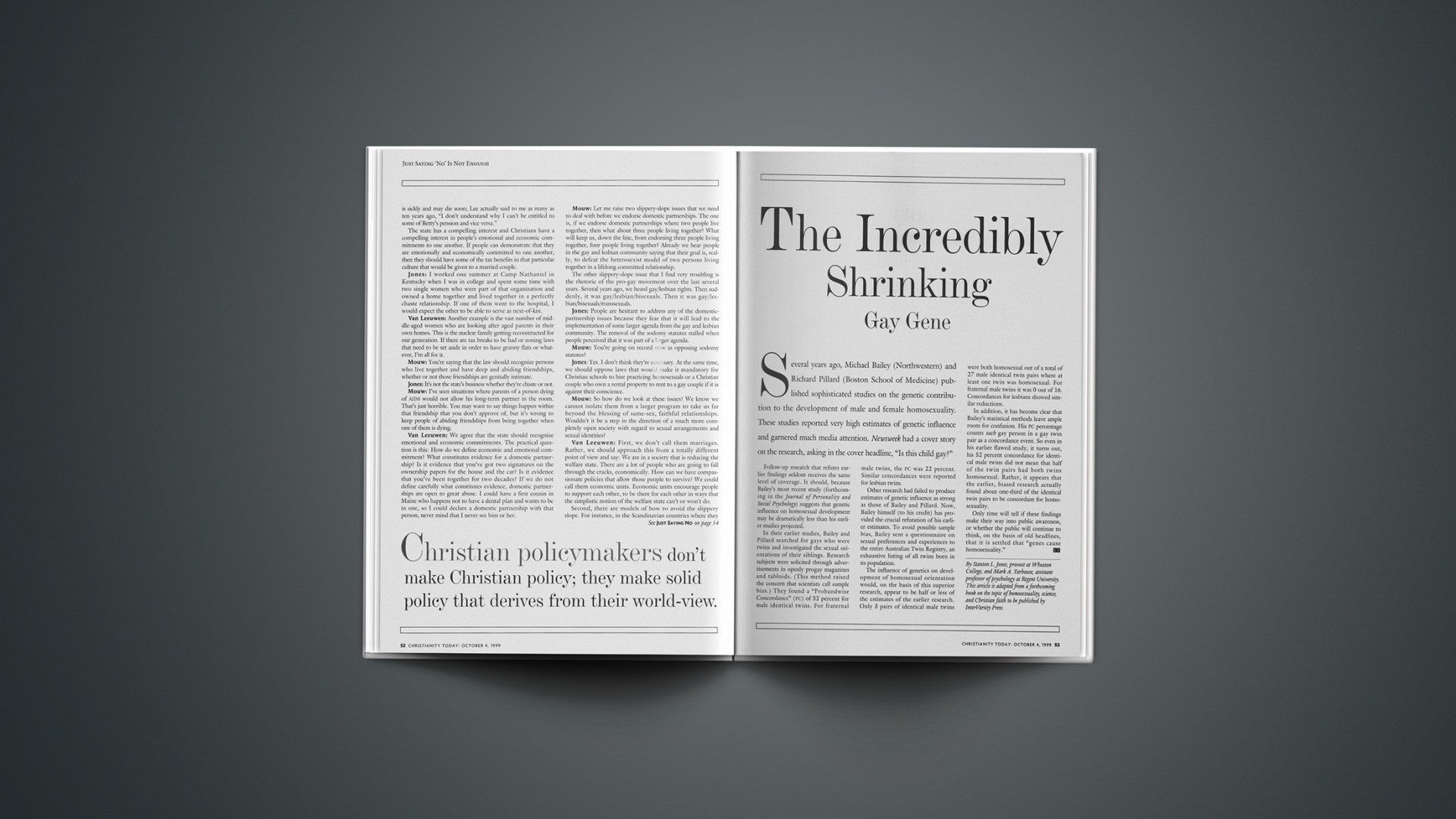Several years ago, Michael Bailey (Northwestern) and Richard Pillard (Boston School of Medicine) published sophisticated studies on the genetic contribution to the development of male and female homosexuality. These studies reported very high estimates of genetic influence and garnered much media attention. Newsweek had a cover story on the research, asking in the cover headline, “Is this child gay?”
Follow-up research that refutes earlier findings seldom receives the same level of coverage. It should, because Bailey’s most recent study (forthcoming in the Journal of Personality and Social Psychology) suggests that genetic influence on homosexual development may be dramatically less than his earlier studies projected.
In their earlier studies, Bailey and Pillard searched for gays who were twins and investigated the sexual orientations of their siblings. Research subjects were solicited through advertisements in openly progay magazines and tabloids. (This method raised the concern that scientists call sample bias.) They found a “Probandwise Concordance” (PC) of 52 percent for male identical twins. For fraternal male twins, the PC was 22 percent. Similar concordances were reported for lesbian twins.
Other research had failed to produce estimates of genetic influence as strong as those of Bailey and Pillard. Now, Bailey himself (to his credit) has provided the crucial refutation of his earlier estimates. To avoid possible sample bias, Bailey sent a questionnaire on sexual preferences and experiences to the entire Australian Twin Registry, an exhaustive listing of all twins born in its population.
The influence of genetics on development of homosexual orientation would, on the basis of this superior research, appear to be half or less of the estimates of the earlier research. Only 3 pairs of identical male twins were both homosexual out of a total of 27 male identical twin pairs where at least one twin was homosexual. For fraternal male twins it was 0 out of 16. Concordances for lesbians showed similar reductions.
In addition, it has become clear that Bailey’s statistical methods leave ample room for confusion. His PC percentage counts each gay person in a gay twin pair as a concordance event. So even in his earlier flawed study, it turns out, his 52 percent concordance for identical male twins did not mean that half of the twin pairs had both twins homosexual. Rather, it appears that the earlier, biased research actually found about one-third of the identical twin pairs to be concordant for homosexuality.
Only time will tell if these findings make their way into public awareness, or whether the public will continue to think, on the basis of old headlines, that it is settled that “genes cause homosexuality.”
By Stanton L. Jones, provost at Wheaton College, and Mark A. Yarhouse, assistant professor of psychology at Regent University. This article is adapted from a forthcoming book on the topic of homosexuality, science, and Christian faith to be published by InterVarsity Press.
Copyright © 1999 Christianity Today. Click for reprint information.










